
Every once in a while, when there is nothing better on TV, we flip the channel to our local PBS for a rollicking episode of Rick Steves' Europe. Last night's episode was particularly fun. At least, it looked like Rick was having more fun than usual as he ran around Prague with an attractive female "tour guide" and a man we assume was his pot dealer, and drank more beer than Rick Steves should probably drink on the air. And between our concern for Rick's wife, who we doubt was a fan of the "tour guide," and our longing for some beer of our own, what really stood out from the art and architecture of Prague was the work of Alphonse Mucha. A little online research turned up this beautiful collection of almost 70 high resolution images at the Art Renewal Center, which I've compiled together into one easily-downloadable folder.
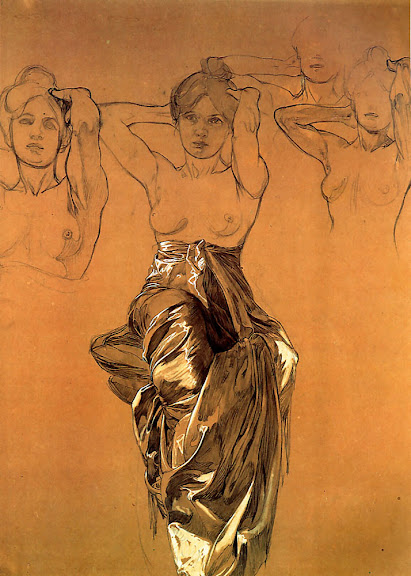
From Been Publishing, I'm Back:
Alphonse Mucha was born in 1860 in Ivancice, Moravia, which is near the city of Brno in the modern Czech Republic. It was a small town, and for all intents and purposes life was closer to the 18th than the 19th century. Though Mucha is supposed to have started drawing before he was walking, his early years were spent as a choirboy and amateur musician. It wasn't until he finished high school (needing two extra years to accomplish that onerous task) that he came to realize that living people were responsible for some of the art he admired in the local churches. That epiphany made him determined to become a painter, despite his father's efforts in securing him "respectable" employment as a clerk in the local court.
Like every aspiring artist of the day, Mucha ended up in Paris in 1887. He was a little older than many of his fellows, but he had come further in both distance and time. A chance encounter in Moravia had provided him with a patron who was willing to fund his studies. After two years in Munich and some time devoted to painting murals for his patron, he was sent off to Paris where he studied at the Academie Julian. After two years the supporting funds were discontinued and Alphonse Mucha was set adrift in a Paris that he would soon transform. At the time, however, he was a 27 year old with no money and no prospects - the proverbial starving artist
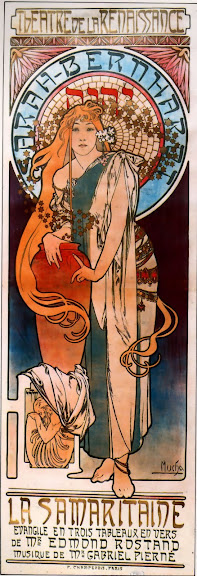
For five years he played the part to perfection. Living above a Cremerie that catered to art students, drawing illustrations for popular (ie. low-paying) magazines, getting deathly ill and living on lentils and borrowed money, Mucha met all the criteria. It was everything an artist's life was supposed to be. Some success, some failure. Friends abounded and art flourished. It was the height of Impressionism and the beginnings of the Symbolists and Decadents. He shared a studio with Gauguin for a bit after his first trip to the south seas. Mucha gave impromptu art lessons in the Cremerie and helped start a traditional artists ball, Bal des Quat'z Arts. All the while he was formulating his own theories and precepts of what he wanted his art to be.
On January 1, 1895, he presented his new style to the citizens of Paris. Called upon over the Christmas holidays to created a poster for Sarah Bernhardt's play, Gismonda, he put his precepts to the test. The poster, at left, was the declaration of his new art. Spurning the bright colors and the more squarish shape of the more popular poster artists, the near life-size design was a sensation.
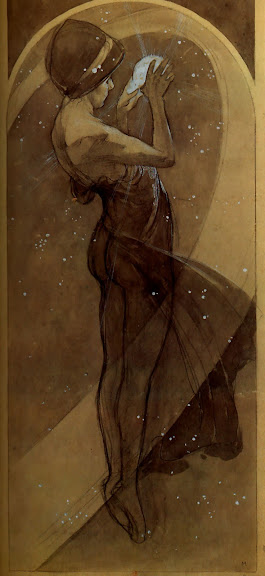
Art Nouveau ("New Art" in French) can trace its beginnings to about this time. Based on precepts akin to William Morris' Arts and Crafts movement in England, the attempt was to eradicate the dividing line between art and audience. Everything could and should be art. Burne-Jones designed wallpaper, Hector Guimard designed metro stations, and Mucha designed champagne advertising (at right) and stage sets. Each country had its own name for the new approach and artists of incredible skill and vision flocked to the movement.
Overnight, Mucha's name became a household word and, though his name is often used synonymously with the new movement in art, he disavowed the connection. Like Sinatra, he merely did it "my way." His way was based on a strong composition, sensuous curves derived from nature, refined decorative elements and natural colors. The Art Nouveau precepts were used, too, but never at the expense of his vision. Bernhardt signed him to a six year contract to design her posters and sets and costumes for her plays. Mucha was an overnight success at the age of 34, after seven years of hard work in Paris.
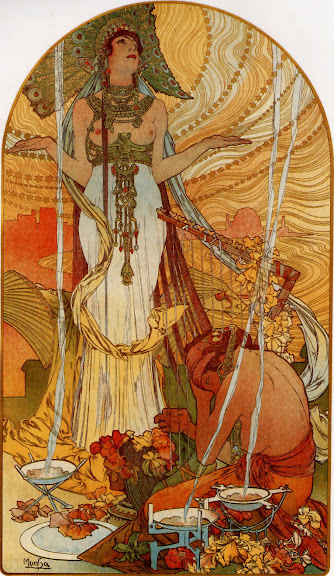
Commissions poured in. By 1898, he had moved to a new studio, illustrated Ilsee, Princess de Tripoli (see image at left), had his first one-man show and had begun publishing graphics with Champenois, a new printer anxious to promote his work with postcards and panneaux - sets of four large images around a central theme (four seasons, four times of day, four flowers, etc. - see below for Stars). Most of these sets were created for the collector market and printed on silk.
There was a World's Fair in Paris in 1900 and Mucha designed the Bosnia-Hercegovina Pavilion. He partnered with goldsmith Georges Fouquet in the creation of jewelry based on his designs. The bronze, Nature (at right) is from this time period. He also published Documents Decoratifs and announced Figures Decoratives. Documents Decoratifs was his attempt to pass his artistic theories on to the next generation. In actuality, it provided a set of blueprints to Mucha's style and his imitators wasted no time in applying them.
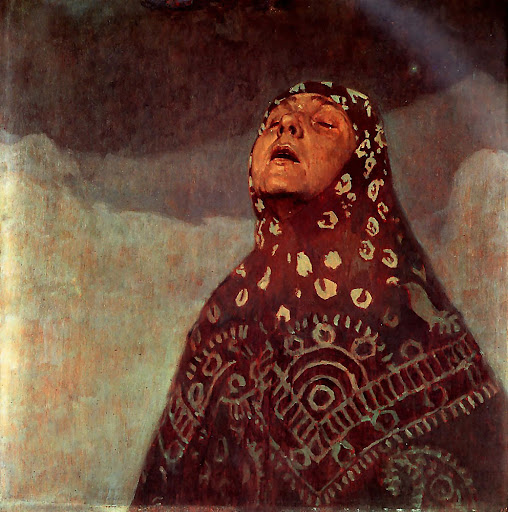
His fame spread around the world and several trips to America and resulted in covers and illustrations in a variety of U.S. magazines. Portraiture was also commissioned from U.S. patrons. At the end of the decade he was prepared to begin what he considered his life's work.
Mucha was always a patriot of his Czech homeland and considered his success a triumph for the Czech people as much as for himself. In 1909 he was commissioned to paint a series of murals for the Lord Mayor's Hall in Prague. He also began to plan out "The Slav Epic" - a series of great paintings chronicling major events in the Slav nation. Financing was provided by Charles Crane, a Chicago millionaire. Mucha had hoped to complete the task in five or six years, but instead it embraced 18 years of his life. Twenty massive (about 24 x 30 feet) canvasses were created and presented to the city of Prague in 1928. Covering the history of the Slavic people from prehistory to the nineteenth century, they represented Mucha's hopes and dreams for his homeland. In 1919 the first eleven canvases were completed and exhibited in Prague, and America where they received a much warmer welcome.
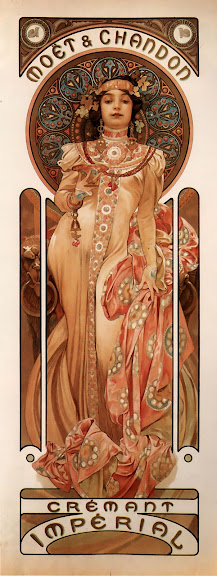
History hasn't been kind to either Mucha or to the Czechs - as the current unrest in the area at the turn of this century shows. Mucha's bequest to his country was received with unkindly cold shoulders. The geopolitical world ten years after World War I was very different from the one in which Mucha had begun his project. Moravia was now a part of a new nation, Czechoslovakia (Mucha offered to help the new country by designing its postage stamps and bank notes). The art world was just as changed. And just as the proponents of "Modern Art" cast their slings and arrows at the oh-so 19th century style, varying political groups brought out their personal arsenals of vitriolic prejudice in damning one aspect or other of Mucha's work. The public seemed to appreciate them, but political agendas seldom give much weight to public opinion. Only recently have they been made available again. They are on permanent display in the castle at Morovsky Krumlov. Brian Yoder of the Art Renewal Center saw them when he visited the Czech Republic in 2001 (he says they are quite remarkable!). He says "the castle has certainly seen better days and the location is not ideal (for example it is unheated in the winter and is closed to the public during those months)." But at least the public, the appreciative and constant public, can view these masterpieces again.
The rest of Mucha's life was spent almost as an anachronism. His work was still beautiful and popular, it just was no longer "new" - a heinous crime in the eyes of the critics. When the Germans invaded Czechoslovakia, he was still influential enough to be one of the first people they arrested. He returned home after a Gestapo questioning session and died shortly thereafter on July 14, 1939.
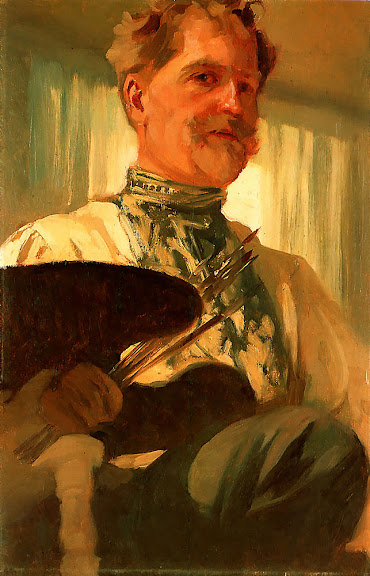
Mucha High Res Images Megaupload Link



